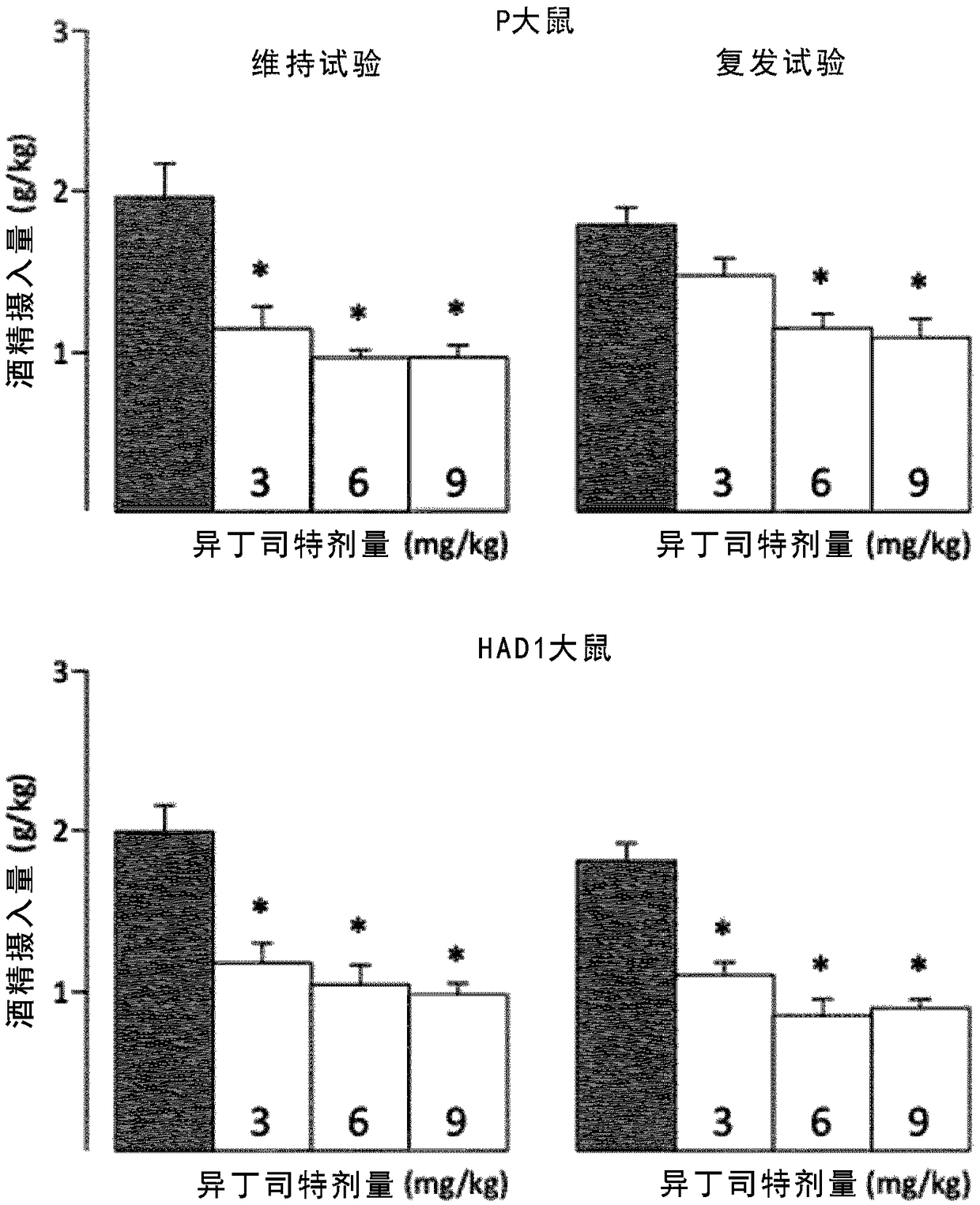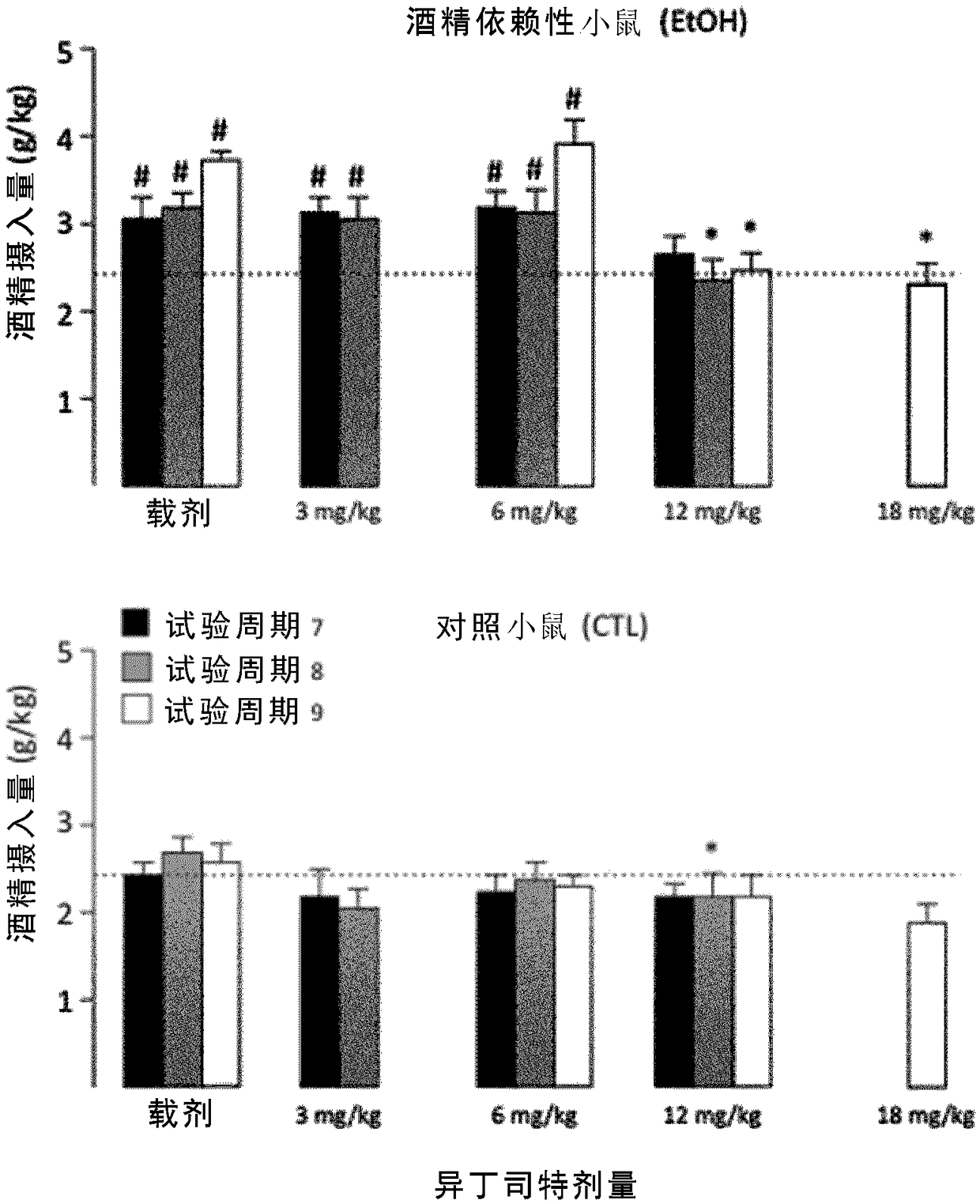Treatment of alcoholism and depression and/or dysphoric mood using ibudilast
A technology of ibudilast, depression, applied in the field of treatment of alcoholism and depression and/or anxiety using ibudilast
- Summary
- Abstract
- Description
- Claims
- Application Information
AI Technical Summary
Problems solved by technology
Method used
Image
Examples
Embodiment 1
[0053] Example 1. Evaluation of ibudilast as a therapeutic agent for reducing spontaneous alcohol consumption in mice
Embodiment 1-A
[0055]The ability of ibudilast (MN-166) to reduce spontaneous alcohol consumption was examined under blinded conditions in selectively bred alcohol-preferring (P) rats and heavy drinking (HAD1) rats, as well as in a mouse model of alcohol dependence . Although each model is characterized by elevated alcohol intake, drugs such as quetiapine and levetiracetam do not selectively reduce alcohol consumption in these models.
[0056] For the study, adult male P rats and HAD1 rats were randomly assigned to receive one of four doses of ibudilast - 0 mg / Kg, 3 mg / Kg, 6 mg / Kg or 9 mg / Kg, where Eight rats were assigned to each dose. Each dosing group was balanced to an average 2 hours / day alcohol (15% v / v) intake. Rats had simultaneous access to water and Mazola corn oil was used as vehicle.
[0057] The study was divided into four pilot phases. During the maintenance test phase, rats in the treatment groups were subcutaneously injected with ibudilast ( 2 mL / kg s.c.), and 8 hours lat...
Embodiment 1-B
[0063] In a separate study, adult male C57BL / 6J mice were used to evaluate ibudilast as a therapeutic agent for the treatment of alcohol dependence. Two groups of mice were used for this study. Mice in the first group were trained to drink alcohol (alcohol-dependent (EtOH) mice) using a 2 h / day free-choice (15% v / v alcohol) drinking program, while mice in the second group were given water and Mice served as control (alcohol independent (CTL)). Both alcohol-dependent and alcohol-independent groups had the same number of mice (N=37-38 / group).
[0064] Mice in the alcohol-dependent group were then exposed to chronic intermittent alcohol (CIE) vapors for 16 hours / day for 4 days. After a 72-h enforced withdrawal period, alcohol-dependent mice were again allowed access to alcohol for 2 h per day for 5 consecutive test days. This pattern of 4 consecutive days of chronic intermittent alcohol vapor exposure followed by mandatory abstinence and a 5-day alcohol acquisition trial perio...
PUM
 Login to View More
Login to View More Abstract
Description
Claims
Application Information
 Login to View More
Login to View More - R&D
- Intellectual Property
- Life Sciences
- Materials
- Tech Scout
- Unparalleled Data Quality
- Higher Quality Content
- 60% Fewer Hallucinations
Browse by: Latest US Patents, China's latest patents, Technical Efficacy Thesaurus, Application Domain, Technology Topic, Popular Technical Reports.
© 2025 PatSnap. All rights reserved.Legal|Privacy policy|Modern Slavery Act Transparency Statement|Sitemap|About US| Contact US: help@patsnap.com



